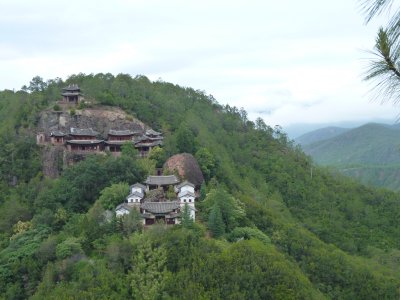
It overlooks Shanxi. It is also the site of some rather fine Buddhist stone carvings. From about 1100 AD as far as we could assertain. No photographs unfortunately.
Difficult to describe but very deep carvings in the sandstone. Very fine detail.
Also Unique in the inclusion of court scenes and sexual references which are atypical of Buddhist sites.
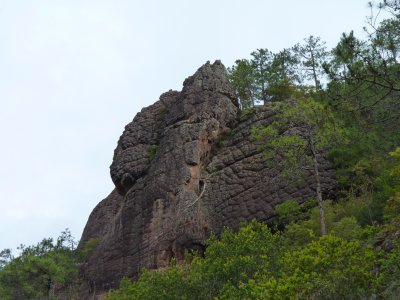
Its like nobbles (technical term for ....).
On one of the maps there's also mention of Lion Fort.
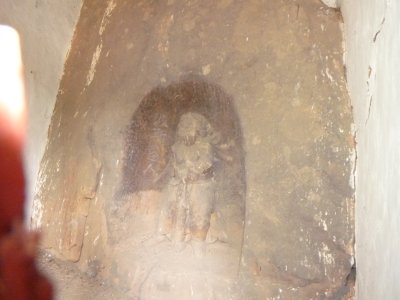
This smallish (1m high) carving in the sandstone (apologies for the photo, it was taken through a locked door) is of a "Persian Man". Taken before we could do any research. Apparently the head is missing but there is sufficient remaining to be identifiable.
Following our "discovery" of this carving we had a long discussion about how people move about the planet and cultures interact.
Perhaps what sparked it was the descriptions of the Tea Horse Road that included the "inadvertent interaction of cultures". Our experience suggests that local tracks had probably existed for millenia and were simply joined up as populations grew and people migrated.
Just a small indicator. Perhaps Buddhism found a way of being adopted across wide areas long before tea and horses were traded.
I guess we've come to figure that when they were later joined to become Tea Horse Road was the added extra, not the primary cause of cultural and religious interaction.
Viewing the carvings of Shibao Mountain with their diverse influences helped us reach a different conclusion to the culturally biased seemingly americanised commentaries.
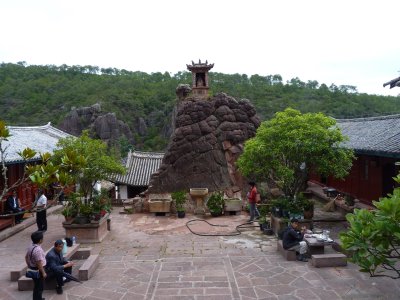
A shrine atop the nobbly sandstone.
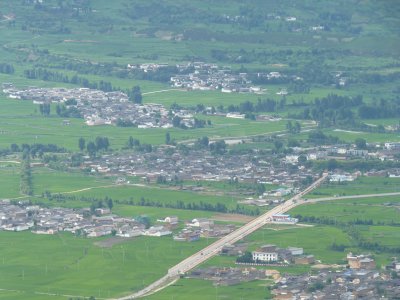
The wide paved entry road is visible.
We followed it straight into the town, our car park campsite is on the right at the end.
Very convenient.
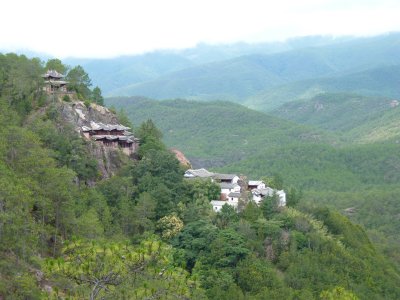
We paid our 5 RMB for parking and headed toward Li Jiang.
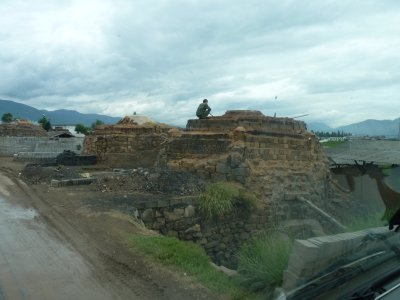
After we'd negotiated some mud and water we realised there was congestion because of tractor trucks delivering and collecting materials from these beehive kilns.
Mostly bricks and tiles, but further on large glazed pots.
Beehive kilns are an old technology. One day we'll do some research on the modern looking brick kilns we've seen. A design very reminiscent of English kilns but probably very universal.
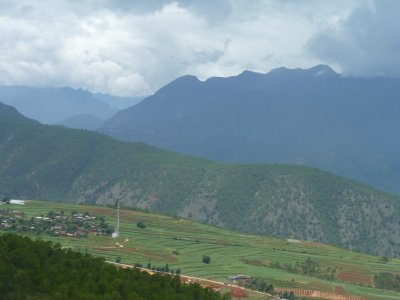
Interesting both because of the view and that it was identified as a scenic spot.
We've seen lots of scenic spots, but few with a car park and a sign.
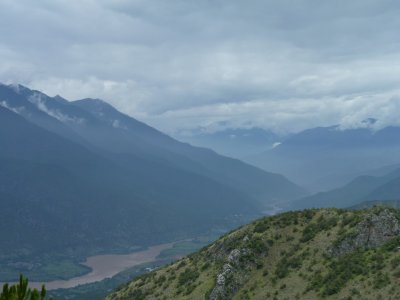
Its one of the three rivers (Irrawaddy, Mekong and Yangtse) that have their source on the Tibetan Plateau to the North West.
Having flowed South, then East, its now headed North.
Through Tiger Leaping Gorge before it then turns first South, then East.
Even the rivers think the mountains are contorted.
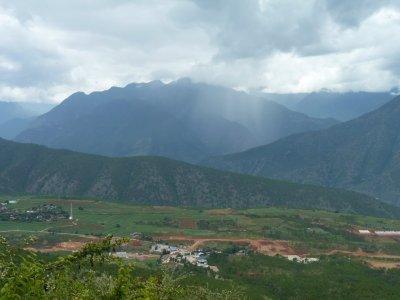
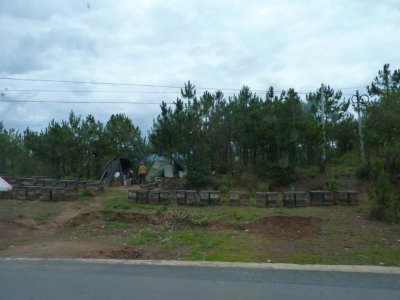
And like anywhere else in the world, honey sold at the roadside.
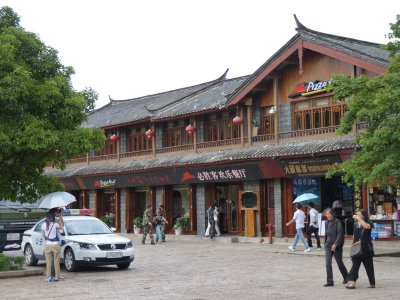
We camped in a hotel car park in the new town. Within walking distance of the old town.
We were welcomed by the presence of a Pizza Hut.
We didn't even think of going in.
The town has been substantially rebuilt with the help of UNESCO after a 1990s earthquake.
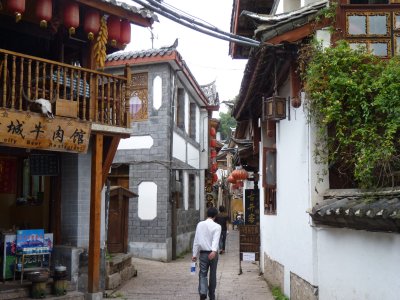
Full of people.
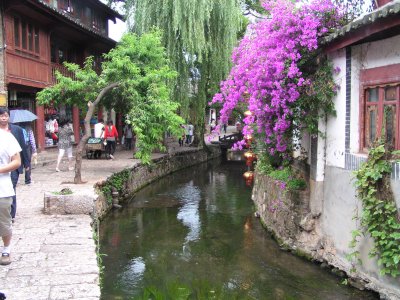
Instructions were that if we became lost to follow the rivers upstream as they lead to where we entered.
Another useful travel tip was to pick up a business card from the nearest hotel to our Tardis to make finding our way back a tad easier.
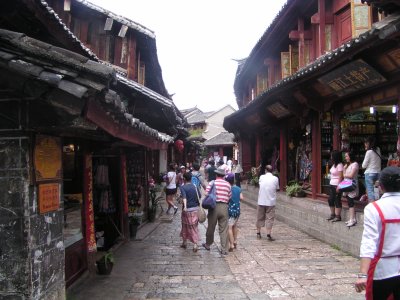
The local ethnic minority are Naxi.
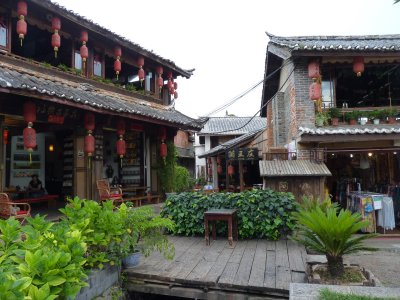
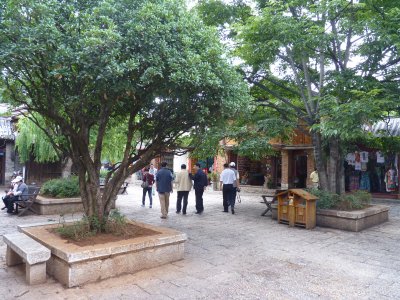
Fortunately someone figured that not only do the people need feeding but the poor horses carrying the tea also needed sustenance.
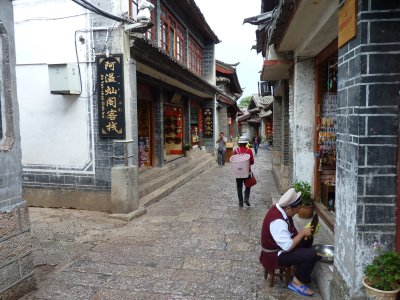
Most things, including building materials and food, seemed to be carried into the city by foot.
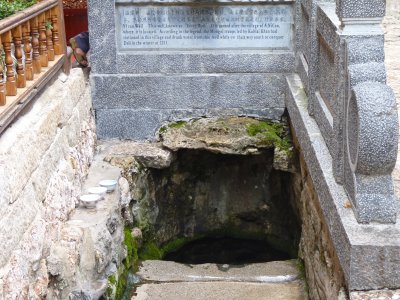
Slowly piecing it all together. Kublai Khan stopped here for a drink in 1253 AD on his way to conquer Dali.
We have seen one reference that suggests Li Jiang was established by Kublai Khan but can't confirm.
He took a different route between Li Jiang and Dali than we have.
Somehow he travelled to the West of the Changshan Mountains and arrived discretely in Dali through the Changshan Grand Canyon (which we partly walked up).
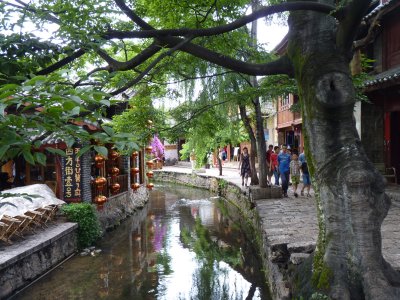
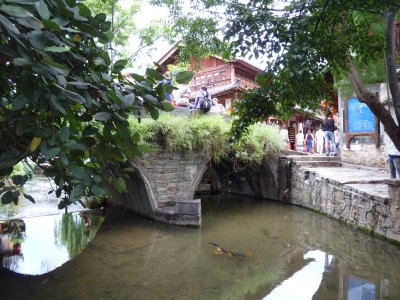
Also called Selling Flax Bridge for what we hope are obvious reasons.
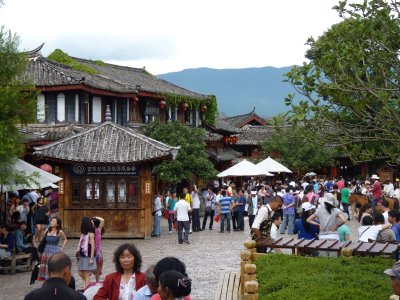
Of course .... we knew that!
The center of town.
We are mildly bemused by the difference between the focal points of Li Jiang which sells grass for the horses and Shaxi which puts on a show at the theatre.
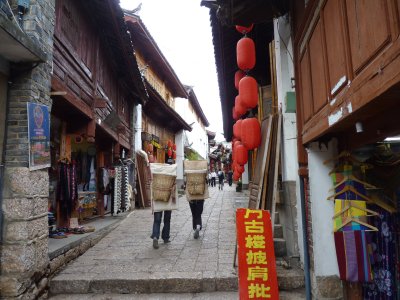
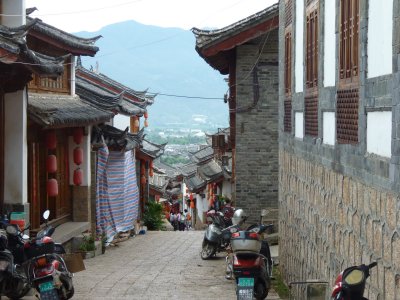
We did find a couple of signs telling us that the best view would be in 20m but they turned out to be guest house "come ons".
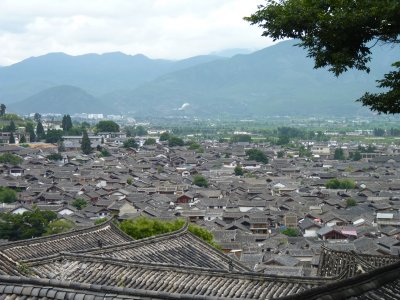
There's snow on them thar hills at some times of the year. And of course less haze at different times of the day.
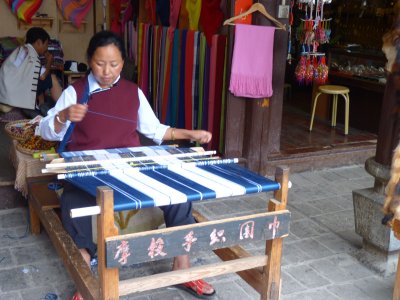
One pass of the shuttle about every minute.
The shuttle was about 600 mm long which explains the width of the cloth.
I can see why John Kay invented the flying shuttle.
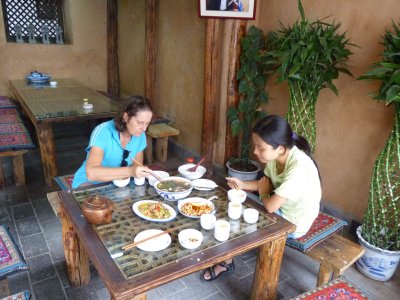
We had a beef stew and some spicy tofu.
This was our first encounter with the old "we have two menus with different prices" trick. In fact three as the board outside proved to be different again.
The waitress didn't seem to understand and was awkward. After a minor discussion the restaurant owner became convinced that since we had ordered off the Chinese menu we should pay the Chinese prices.
The meal was excellent. We were arguing about $1 on principle.
We were quietly pleased that Susanna recognised the issue first and initiated the discussion.
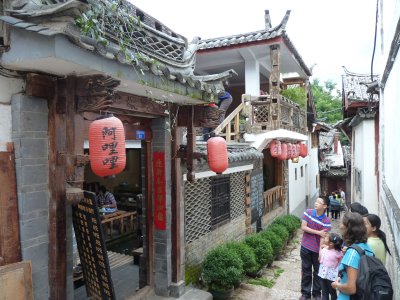
The next victims about to enter after the customary
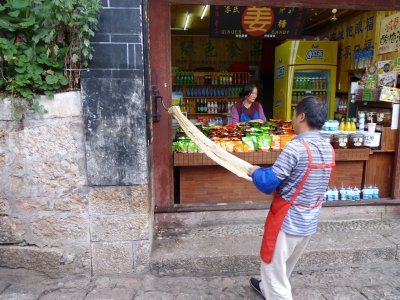
It looked like hard work stretching it and refolding it.
Just like sweet making anywhere.
We didn't buy any but went home anyway. At a pace appropriate to having just eaten.
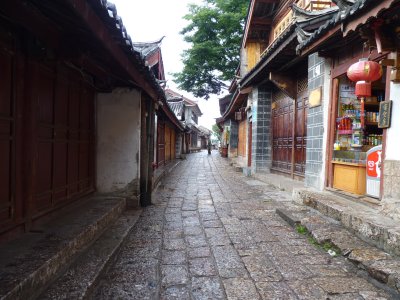
Tourists don't get up early obviously.

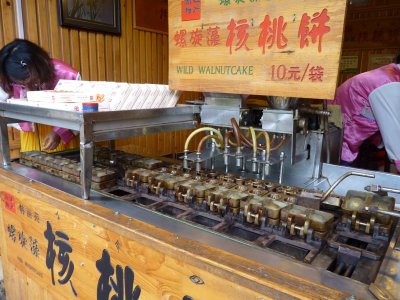
A bit like a doughnut making machine but a bit more sophisticated.
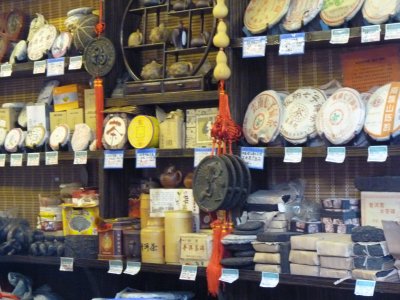
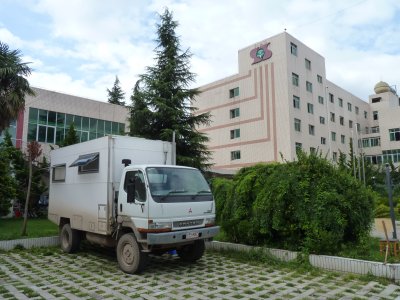
Almost ready for off.
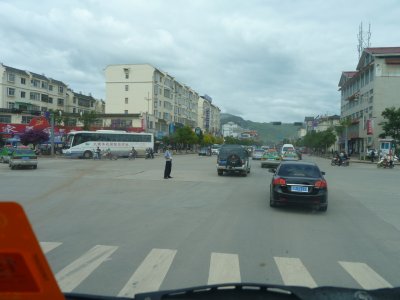
The policeman in the middle of the junction moved around a bit to avoid the traffic.